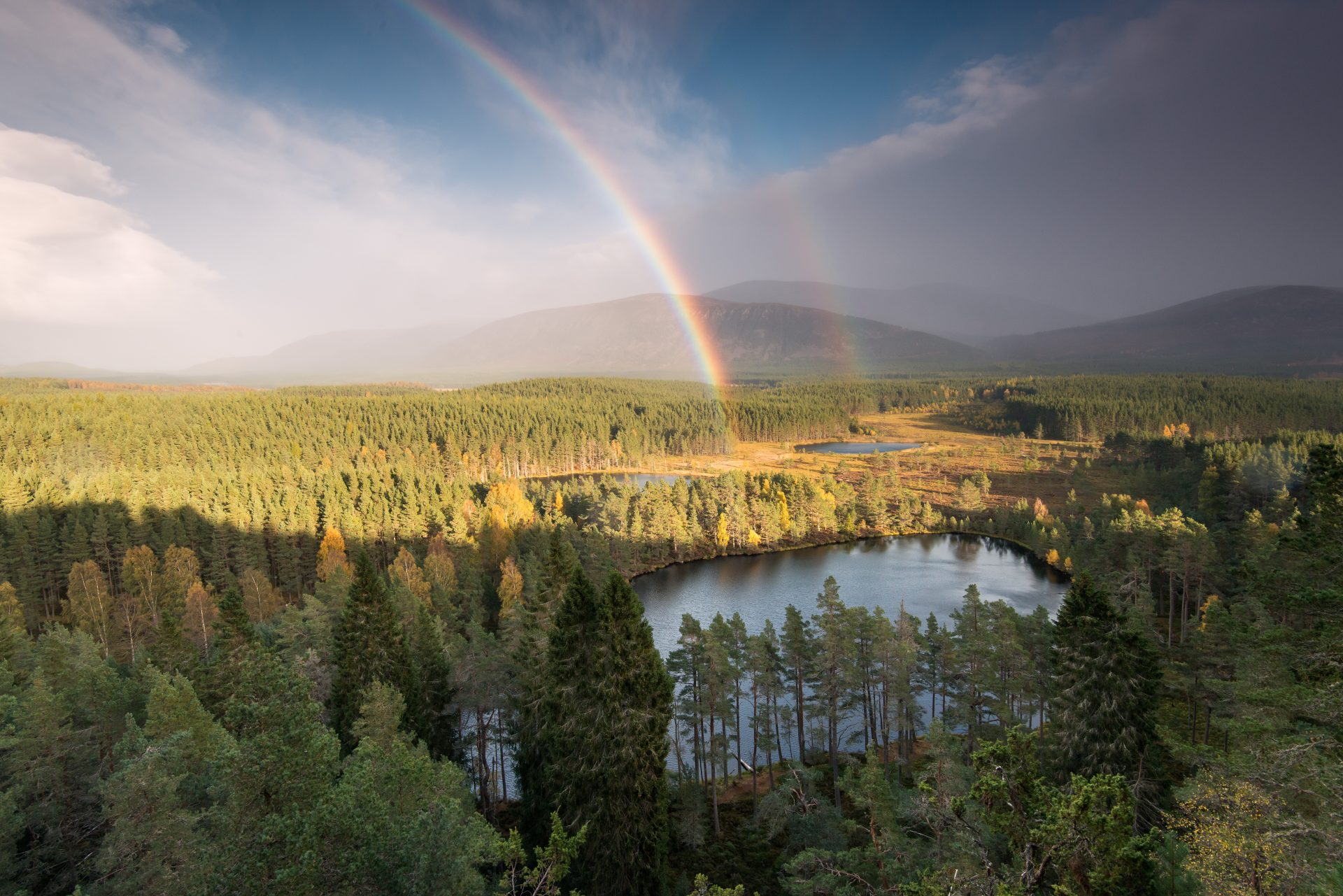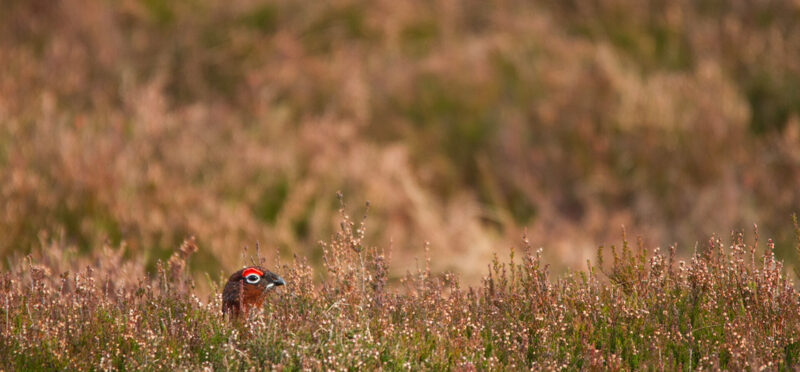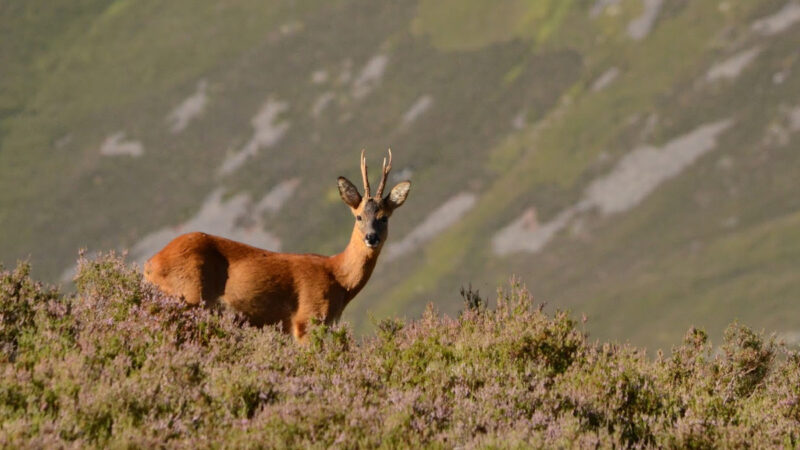Cairngorms Forests, Mountains, Peatlands, Lochs, Waterways
– There’s No Place Like Our Wild Isles
The Cairngorms National Park is one of the most spectacular habitats in the UK, recently celebrated in the David Attenborough BBC’s Wild Isles series, which explored areas across Scotland.
It’s beautiful to behold – but you only need to take a tiny peak further to appreciate the complex, vibrant and dynamic ecosystems within it – and understand why the National Park is home to a quarter of the UK’s rare and endangered species.
We speak with Annie Armstrong, Wild Braemar and Speyside Wildlife about the habitat and some of the animals that can be spotted in the Cairngorms.
Unique Pine Woodland
Some of the most important woodlands in Britain grow here. Did you know that native tree species comprise a whopping 79 per cent of the National Park’s woodlands. This is a quarter of the entire Scottish native woodland, and more than half of the surviving Ancient Caledonian forest?!
Rare Peatlands
Peatlands are the most carbon rich ecosystems on earth and the Cairngorms National Park has spectacular peatlands. The warmer weather of Spring brings a burst of activity as the delicate wetland flowers fight up through the moss, tadpoles zoom around in the pools and wetland birds come in to nest in the grasses and heather. Carbon rich and thriving with life.
Lochs & Waterways
The peat-laden water of the National Park filters slowly through the glens, eventually making its way into babbling burns, turning the water the colour of whisky. There are three magnificent rivers famous for their quality of salmon fishing – The Spey, The Don and The Dee, and over 60 lochs and many more lochans and burns.
Regeneration
While exploring these wilder parts of the Cairngorms you may stumble across hillsides where young Scots pine trees are establishing themselves. Riversides are being replanted and the rivers restored with dead wood to create pools for breeding fish. Peatlands are being recovered and the tiny worlds occupied by rare mosses and invertebrates (creatures without spines – from bees to beetles, and spiders to snails!) are being studied and protected.
This regeneration will help to allow the National Park to remain home to some of the most endangered species in the UK such capercaillie, pine marten, osprey, Scottish wildcat, golden eagle, red squirrel, snow bunting, lapwing, crested tit, dotterel and black grouse, as well as the many invertebrates who just love to live here!
Get Spotting – From A Distance!
‘Delve deeper still into the scene and you find the micro-worlds. The intricately beautiful and surprisingly colourful flora, fungi and tiny creatures found only when we take a moment to stop and look closely.’ – Annie from Wild Braemar
Spotting wildlife and recognising habitats is one of the great joys of visiting the Cairngorms, it can be as simple as a walk on the Speyside Way paying that bit more attention, and of course being super mindful not to disturb the habitats these special creatures call home.
If you would like to delve a bit deeper there are lots of fabulous people who can guide you through the magic of the National Park, check out Wild Braemar, Speyside Wildlife and Wild Discovery to name but a few.
Some top tips to ensure that you enjoy the wonder of the Cairngorms National Park without disturbing the wildlife that call it home…
- Tread lightly and stick to the path
- Keep four legged friends under close control, especially during nesting season (March to August). Our ground nesting birds are really sensitive to disruption
- If you spot something special, enjoy it from afar and quietly move on – we love to see them but they do not want to see you!
It will be a team effort to ensure these rare and endangered species stick around and we LOVE having them in the Cairngorms National Park – let’s help them to thrive together!
Golden Eagle Aquila chrysaetos Gaelic iolair-bhuidhe
Until the re-establishment of the White-tailed Eagle in Scotland, the Golden Eagle was our largest airborne predator. This is an impressive bird, females have a wingspan of up to 2.2 m. As they are most often seen in flight and at distance, adults usually appear dark below with long, broad wings and clearly splayed feather tips (fingers). The upper wings show pale “shoulders” and the golden nape (from which it gets its name) can be obvious. Young birds show white patches in the wings and a white base to the tail. Nests are usually on crags, but some birds are also tree nesters. Nests can be massive, especially if used on and off for many years.
Red Squirrel Sciurus vulgaris Gaelic feòrag ruadh
Red Squirrels are a common species in the Cairngorms National Park. They vary in colour from bright ginger to greyish-brown, being brightest after spring moult and darkest in autumn/winter and their characteristic bushy tails can bleach almost white in the summer. They can be found in both coniferous and deciduous woodland, feeding mainly on seeds and fruits, with fungi in season. Often, they can be seen carrying food including: hazel nuts, pine cones, beech mast and forest fruits. Squirrels are regularly attracted to garden peanut feeders.
Join our Mailing List
Sign up to get notified of the latest deals, news and all the latest information direct to your inbox.



